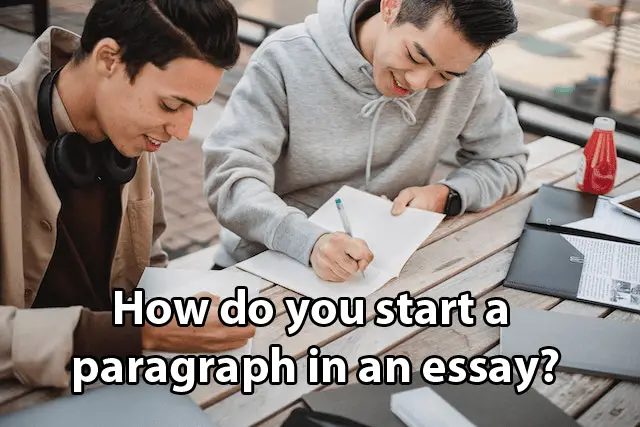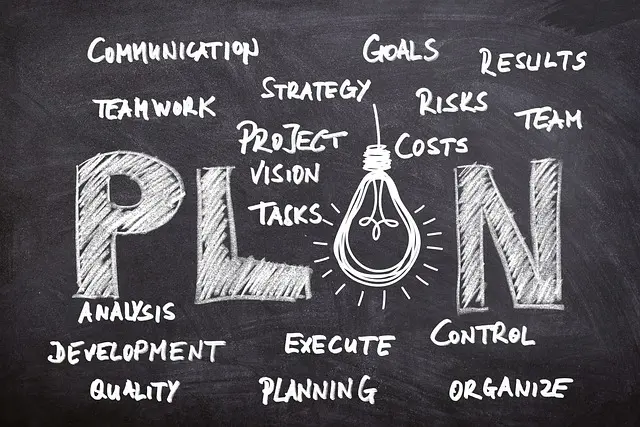
The Purpose of Paragraphs in an Essay
In academic writing, paragraphs play a crucial role in delivering coherent and organized information to the reader. Each paragraph serves a specific purpose, contributing to the overall development of ideas in an essay. By creating a clear and logical structure, paragraphs help in organizing thoughts, presenting evidence, and making arguments. Additionally, paragraphs act as building blocks that facilitate the smooth flow of information from one idea to another. Within a paragraph, the writer introduces a topic sentence, which serves as a guidepost for the reader, highlighting the main idea or argument that will be discussed. This structural element not only enhances clarity but also helps in maintaining focus and coherence throughout the essay.
To captivate readers’ attention and make the beginning of a paragraph more impactful, writers can employ various strategies. One approach is to use examples and evidence, providing concrete instances or supporting facts to back up claims. By doing so, writers establish credibility and create a sense of relevance for the reader. Another effective technique is incorporating quotations from experts or reputable sources, adding authority and depth to the writer’s arguments. However, it is crucial to be mindful of common mistakes that can hinder the effectiveness of paragraph starters. These errors may include using clichés, making broad or unsupported generalizations, or using overly complex language that can alienate the reader. By avoiding these pitfalls and employing engaging strategies, writers can ensure that the opening of their paragraphs effectively introduces and entices the reader into the exploration of their ideas.
Understanding the Structure of an Essay
The structure of an essay is a crucial aspect that contributes to its overall coherence and effectiveness. When writing an essay, it is essential to have a clear understanding of its structure in order to organize the ideas and arguments effectively. Typically, an essay consists of three main sections: the introduction, body paragraphs, and conclusion. The introduction serves as the opening of the essay, providing background information, highlighting the main topic, and presenting a thesis statement that sets the direction for the rest of the essay.
The body paragraphs, which come after the introduction, form the core of the essay and provide in-depth analysis and evidence to support the thesis statement. Each body paragraph focuses on a specific point or argument, and it should begin with a clear topic sentence that introduces the main idea of the paragraph. This topic sentence acts as a guide, informing the reader about the content of the paragraph and its relevance to the overall argument. Supporting details, examples, and evidence are then presented and explained in the body of the paragraph to further develop the main idea.
Significance of Topic Sentences in Paragraphs
Topic sentences play a crucial role in paragraphs, as they serve as a concise summary of the main idea or focus of the paragraph. They act as guideposts for readers, providing a clear direction for the content that follows. Without a strong topic sentence, readers may struggle to understand the purpose or relevance of the paragraph. By including keywords related to the main idea in the topic sentence, writers can ensure that readers grasp the intended message and stay engaged throughout the paragraph. This clarity and coherence in paragraph structure not only enhances understanding but also helps to establish a logical flow of ideas within the essay.
Moreover, topic sentences help to maintain the overall structure of an essay. They act as mini-thesis statements for individual paragraphs, connecting the paragraph’s content to the broader argument or thesis of the essay. In this way, topic sentences establish a clear link between each paragraph and the overarching theme of the essay, creating a cohesive and organized piece of writing. By incorporating keywords that reflect the essay’s main ideas within the topic sentence, writers can seamlessly transition from one paragraph to the next, ensuring a smooth progression of thought and avoiding abrupt shifts in the narrative. Through the consistent and strategic use of topic sentences, writers can effectively convey their arguments, making it easier for readers to follow along and comprehend the essay’s message.
Transition Words and Phrases for Effective Paragraph Starters
Transition words and phrases play a crucial role in creating effective paragraph starters. These words and phrases serve as bridges between ideas, allowing for a smooth flow of information and enhancing the overall coherence of the essay. By using transition words and phrases, writers can seamlessly connect their thoughts and guide readers from one point to another.
One essential transition word is “however.” This word is often used to present a contrasting idea or argument. For example, in an essay discussing the advantages and disadvantages of technology, the writer may use “however” to introduce a counterpoint that challenges the previously mentioned benefits. By using this transition word, the writer signals to the readers that a different perspective is being presented.
Another important transition phrase is “in addition.” This phrase is employed to introduce additional supporting information or evidence that strengthens the writer’s argument. For instance, if an essay is discussing the effects of climate change, the writer may use “in addition” to introduce more examples of environmental damage caused by rising temperatures. By using this transition phrase, the writer demonstrates to the readers that there is more evidence available to support their claims.
Incorporating transition words and phrases into paragraph starters not only enhances the overall organization of an essay but also helps readers navigate through the writer’s ideas with ease. By selecting appropriate transition words and phrases, writers can effectively guide their readers through various points, contrasting perspectives, and supporting evidence.
Exploring Different Approaches to Begin a Paragraph
When it comes to writing an essay, the beginning of a paragraph plays a crucial role in capturing the reader’s attention. Exploring different approaches to begin a paragraph can be instrumental in creating a compelling and engaging piece of writing. One approach is to start with a thought-provoking question. By initiating a paragraph with a question, readers are immediately propelled into the realm of critical thinking, sparking their curiosity and encouraging them to delve deeper into the topic being discussed. This technique not only invites readers to actively participate in the essay but also sets the stage for an in-depth exploration of ideas.
Another approach to begin a paragraph is by providing a pertinent anecdote or a vivid description. By introducing a short narrative or a vivid scene, the reader’s interest is piqued, and a connection is established. This narrative approach allows readers to emotionally engage with the content and creates a sense of relatability. Whether it is a personal story, a historical event, or a hypothetical scenario, using an anecdote or description helps to create a visual representation and stimulates the reader’s imagination. This technique adds a layer of depth to the writing, making it memorable and impactful.
Using Examples and Evidence to Start a Paragraph
When it comes to starting a paragraph, using examples and evidence can be an effective approach. By incorporating specific examples and supporting evidence, you provide readers with concrete evidence to support your claims or arguments. This allows them to better understand and visualize the information you are presenting. Examples can come in various forms, such as real-life scenarios, case studies, or statistical data. By starting a paragraph with an example or evidence, you engage readers right from the beginning and make your writing more persuasive.
Including examples and evidence at the start of a paragraph also helps to establish credibility and authority. When you provide concrete examples or cite reputable sources, you show readers that you have done your research and have a solid foundation for your arguments. This not only strengthens your overall argument but also makes your writing more reliable and trustworthy. Additionally, using examples and evidence can make your writing more relatable and accessible to a broader audience. By grounding your points in real-world examples or facts, you make complex information more understandable and relatable to readers, which can enhance their engagement with your writing.
Incorporating Quotations to Start a Paragraph
Incorporating quotations to start a paragraph can add credibility and depth to your writing. By including the words of experts or authoritative sources, you can immediately grab the attention of your readers and provide them with valuable insights. When selecting a quotation, it is important to choose one that aligns with the topic of your paragraph and supports your argument. This will help to establish the context and relevance of the quote, ensuring that it seamlessly integrates into your writing. Additionally, it is crucial to properly introduce and analyze the quotation, explaining its significance and providing your own interpretation. By skillfully incorporating quotations, you can enhance the overall impact of your paragraphs and enrich your writing.
One effective way to incorporate a quotation at the beginning of a paragraph is by using it as a direct statement or a thought-provoking question. This approach instantly grabs the reader’s attention and introduces a key idea or perspective. For example, in an essay about the importance of lifelong learning, you could begin a paragraph with a quotation from Albert Einstein: “Intellectual growth should commence at birth and cease only at death.” This quote immediately emphasizes the value of continuous learning and serves as a powerful starting point for your paragraph. From there, you can provide further analysis and discussion to support your argument and engage your readers. By skillfully integrating quotations in this manner, you can create a strong and compelling opening for your paragraphs.
Strategies for Engaging Readers at the Beginning of a Paragraph
In order to captivate readers from the very beginning of a paragraph, it is crucial to employ effective strategies that engage their attention and pique their curiosity. One such strategy is to use vivid and descriptive language to create a clear mental image for the reader. By painting a picture with words, the reader is immediately drawn into the narrative or argument being presented. Additionally, starting a paragraph with a thought-provoking question can be highly effective. This strategy prompts the reader to actively engage with the text and search for an answer within their own thoughts and experiences. By doing so, the reader becomes an active participant in the writing, fostering a deeper connection with the content.
Another strategy for engaging readers at the beginning of a paragraph is to use an anecdote or a personal story. This approach creates an immediate connection between the writer and the reader, as personal experiences are relatable and often elicit emotional responses. By opening with an anecdote, the reader is more likely to emotionally invest in the paragraph, enhancing their overall engagement with the text. Furthermore, utilizing rhetorical questions can be an effective way to provoke the reader’s thoughts and guide them towards the desired train of thinking. By posing a question that challenges the reader’s assumptions or beliefs, their interest is piqued, leading them to read further and explore the topic in more depth.
Avoiding Common Mistakes when Starting a Paragraph
When it comes to starting a paragraph, there are a few common mistakes that writers often make. One of these mistakes is failing to provide a clear and concise topic sentence. A topic sentence is essential because it sets the tone and direction for the entire paragraph. Without a strong topic sentence, readers may struggle to understand the main idea or purpose behind the paragraph. To avoid this mistake, it is important to always start a paragraph with a topic sentence that clearly and effectively communicates the main point.
Another common mistake when starting a paragraph is using vague or generic language. It is important to use specific and precise language to engage readers and make your point more convincing. Using generic phrases or words can make your writing appear bland and uninteresting. To avoid this mistake, try to include specific details, examples, or evidence in your opening sentences. This will not only grab the reader’s attention but also provide a solid foundation for your argument or discussion.
Tips for Revitalizing the Opening of a Paragraph
Tips for Revitalizing the Opening of a Paragraph:
When it comes to captivating readers right from the start of a paragraph, there are several effective strategies that can be employed. Firstly, incorporating a thought-provoking question can instantly engage the reader’s curiosity. By posing a question that is relevant to the topic being discussed, it creates a sense of intrigue and encourages the reader to continue reading further. Another technique is to include a surprising or intriguing fact or statistic. This immediately grabs the reader’s attention and makes them eager to learn more about the subject matter. Lastly, using a vivid description or imagery can paint a picture in the reader’s mind and make the opening of the paragraph visually stimulating. By employing these tips, the opening of a paragraph can be revitalized and become more compelling.
Furthermore, utilizing personal anecdotes or experiences as a way to start a paragraph can also greatly enhance the reader’s interest. By sharing a relatable story or personal encounter related to the topic, it creates a connection between the writer and the reader, making the paragraph more relatable and engaging. Additionally, employing a rhetorical question can be an effective technique to capture the reader’s attention. By posing a question that requires the reader to reflect on their own beliefs or ideas, it immediately piques their interest and encourages them to delve deeper into the paragraph. Lastly, employing a strong and concise statement that summarizes the main point or argument of the paragraph can serve as a powerful opening. By providing a clear and concise thesis statement, it sets the tone for the rest of the paragraph and captivates the reader’s attention from the beginning.












